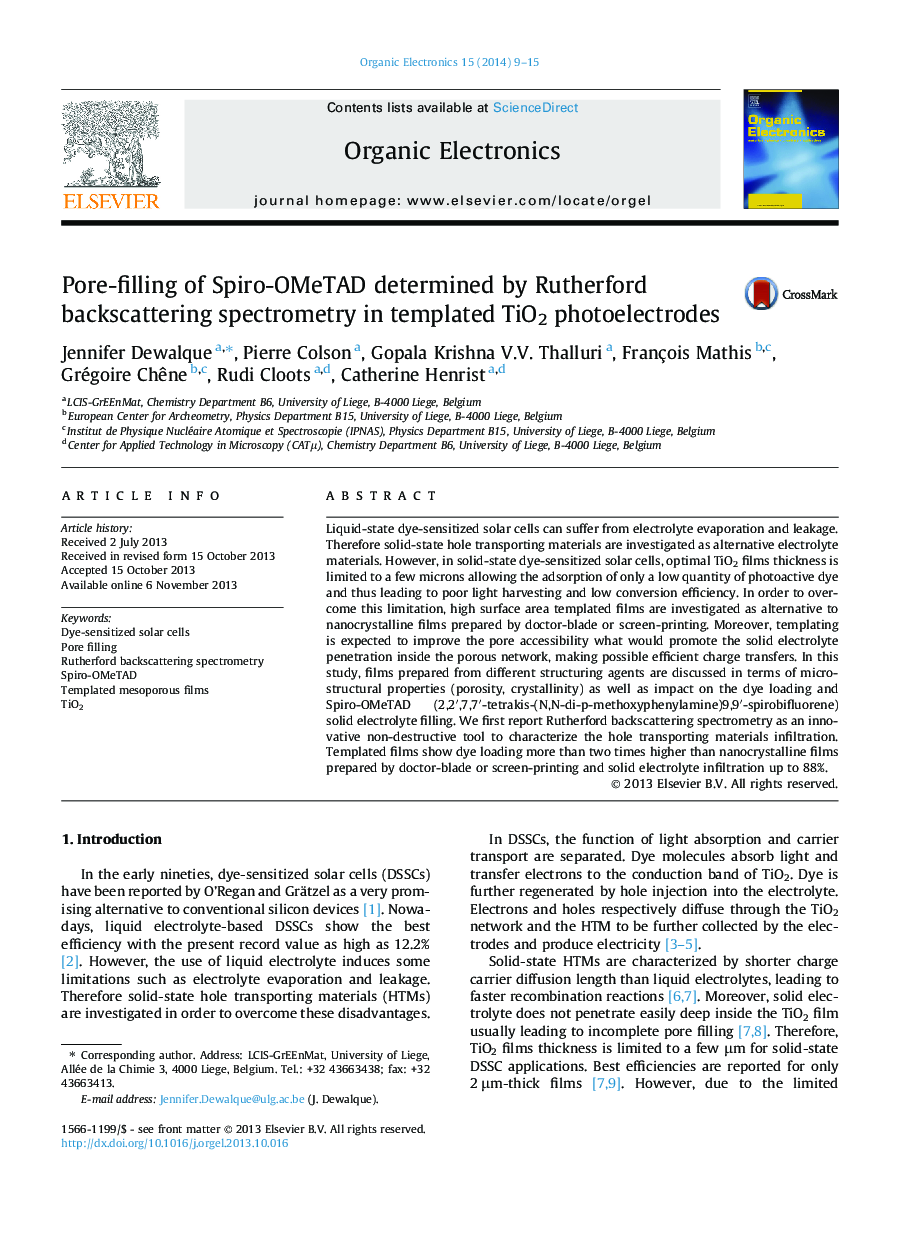| کد مقاله | کد نشریه | سال انتشار | مقاله انگلیسی | نسخه تمام متن |
|---|---|---|---|---|
| 1263844 | 972083 | 2014 | 7 صفحه PDF | دانلود رایگان |

• Templated films are investigated alternatively to nanoparticles films.
• Templating is expected to improve the pore accessibility to solid electrolyte.
• Pore filling is characterized by Rutherford backscattering spectrometry.
• Templated films show solid electrolyte infiltration up to 88%.
Liquid-state dye-sensitized solar cells can suffer from electrolyte evaporation and leakage. Therefore solid-state hole transporting materials are investigated as alternative electrolyte materials. However, in solid-state dye-sensitized solar cells, optimal TiO2 films thickness is limited to a few microns allowing the adsorption of only a low quantity of photoactive dye and thus leading to poor light harvesting and low conversion efficiency. In order to overcome this limitation, high surface area templated films are investigated as alternative to nanocrystalline films prepared by doctor-blade or screen-printing. Moreover, templating is expected to improve the pore accessibility what would promote the solid electrolyte penetration inside the porous network, making possible efficient charge transfers. In this study, films prepared from different structuring agents are discussed in terms of microstructural properties (porosity, crystallinity) as well as impact on the dye loading and Spiro-OMeTAD (2,2′,7,7′-tetrakis-(N,N-di-p-methoxyphenylamine)9,9′-spirobifluorene) solid electrolyte filling. We first report Rutherford backscattering spectrometry as an innovative non-destructive tool to characterize the hole transporting materials infiltration. Templated films show dye loading more than two times higher than nanocrystalline films prepared by doctor-blade or screen-printing and solid electrolyte infiltration up to 88%.
From Rutherford backscattering spectrometry, we observe the Ti signal flattening and its displacement to lower energy after Spiro-OMeTAD infiltration. Two steps peaks observed for O and C atoms are due to the different backscattering behaviors of the Spiro-OMeTAD overlayer (pure phase) and the Spiro-OMeTAD filled inside the TiO2 network (mixed phases).Figure optionsDownload as PowerPoint slide
Journal: Organic Electronics - Volume 15, Issue 1, January 2014, Pages 9–15